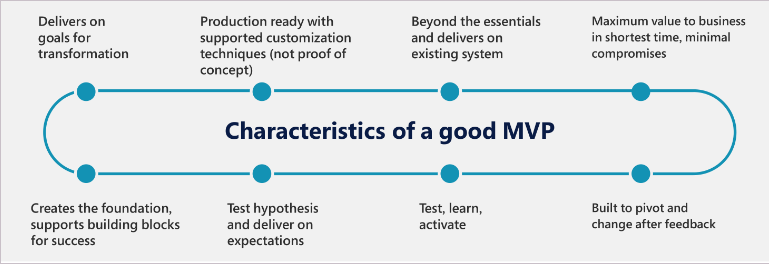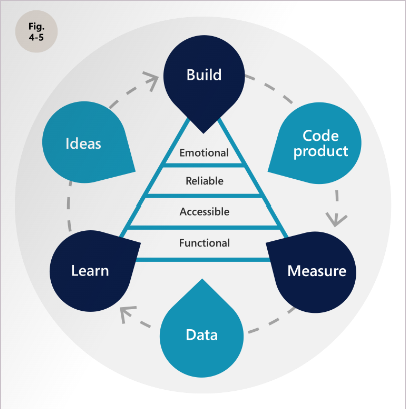Drive feedback and iterations with a minimal viable product strategy
You want to transform your business process with digital technologies. But you don't want to spend a lot of time and money on building and testing your app. You want to get feedback and results as soon as possible. You want to be able to adapt and change your app based on your learning and needs.
A minimal viable product (MVP) strategy can help you achieve these goals. It's a strategy that helps you build, measure, and learn from your app quickly and efficiently. It comes from the lean startup methodology, which is widely used by entrepreneurs and innovators.
An MVP isn't a solution with just the basic and essential features. It's a solution that helps you transform your process and deliver on the most important transformation goals with the least amount of effort. It's production-ready and uses supported customization techniques. And it's not the end state. It's a solution that drives quick feedback, iterations, and pivots to improve your app and your outcomes.
Example
Let's look at an example of a sales app. You have a homegrown sales system that lets you enter and view opportunity data. You also have a back-end system that stores this information and generates reports for management. You want to upgrade to a Dynamics 365 cloud-based sales app that has rich features, AI insights, and integration capabilities with Power BI. You want to improve your opportunity closure rate and get accurate growth forecasts.
A common approach is to start with the out-of-the-box opportunity management process and reports, and plan to add the AI-based insights and Power BI integration in future phases. But this approach doesn't achieve your actual goal of sales transformation. Your app might have a better user experience, but it does the same thing as your homegrown system. It doesn't create much value for your business.
A better approach is to use the MVP strategy. You can start with the embedded intelligence features, such as opportunity scoring and relationship health. These features can help you target the right opportunities and improve your close rate. They can directly affect your business from day one. You can also use Power BI to create custom reports and dashboards that show your sales performance and trends. You can then get feedback from your users and stakeholders and see how your app is working for them. You can make changes and improvements based on your learning and needs.
Characteristics
A good MVP has the following characteristics:
- It delivers on the most important of the digital transformation goals.
- It's production-ready and uses supported customization techniques.
- It goes beyond the essentials and delivers on top of the existing capability of the current system.
- It focuses effort on delivering maximum business value in the shortest amount of time.
- It's built in a way that allows for quick changes based on feedback and enables pivots.
- It tests and learns from the latest product features that can be activated easily.
- It tests the hypothesis of a specific feature or solution delivering the expected business outcome and adjusts based on the results.
- It creates the foundation for long-term success by supporting a "building block" mindset in which you keep adding without disrupting previous steps. For more information about the architectural skills to realize this approach, read the article Solution architecture design pillars.
The MVP strategy works well for new implementations, but you can also use it for existing apps that are being replaced or migrated to another platform. You should consider the existing functionality to ensure parity, but you shouldn't try to mimic or replicate the experiences of the old app. You should focus your MVP strategy on delivering the most value to the business sooner without limiting the scope to essentials. An MVP with a broad scope that takes years to deliver is not an MVP.
Next steps
- Review the overview of driving app value through digital transformation
- Learn how Success By Design helps you define the approach to digital transformation
- Embrace the mindset of constant change and learn about the change streams for digital transformation
- Learn how to use a transformation map to align your app features with your transformation goals
- Find out how to plan phases and increments to deliver value and engage stakeholders
- Learn how to drive expansion through digital transformation
- Use the checklist to make sure you're driving app value
- Read the case study to see how a real customer drove app value through digital transformation

